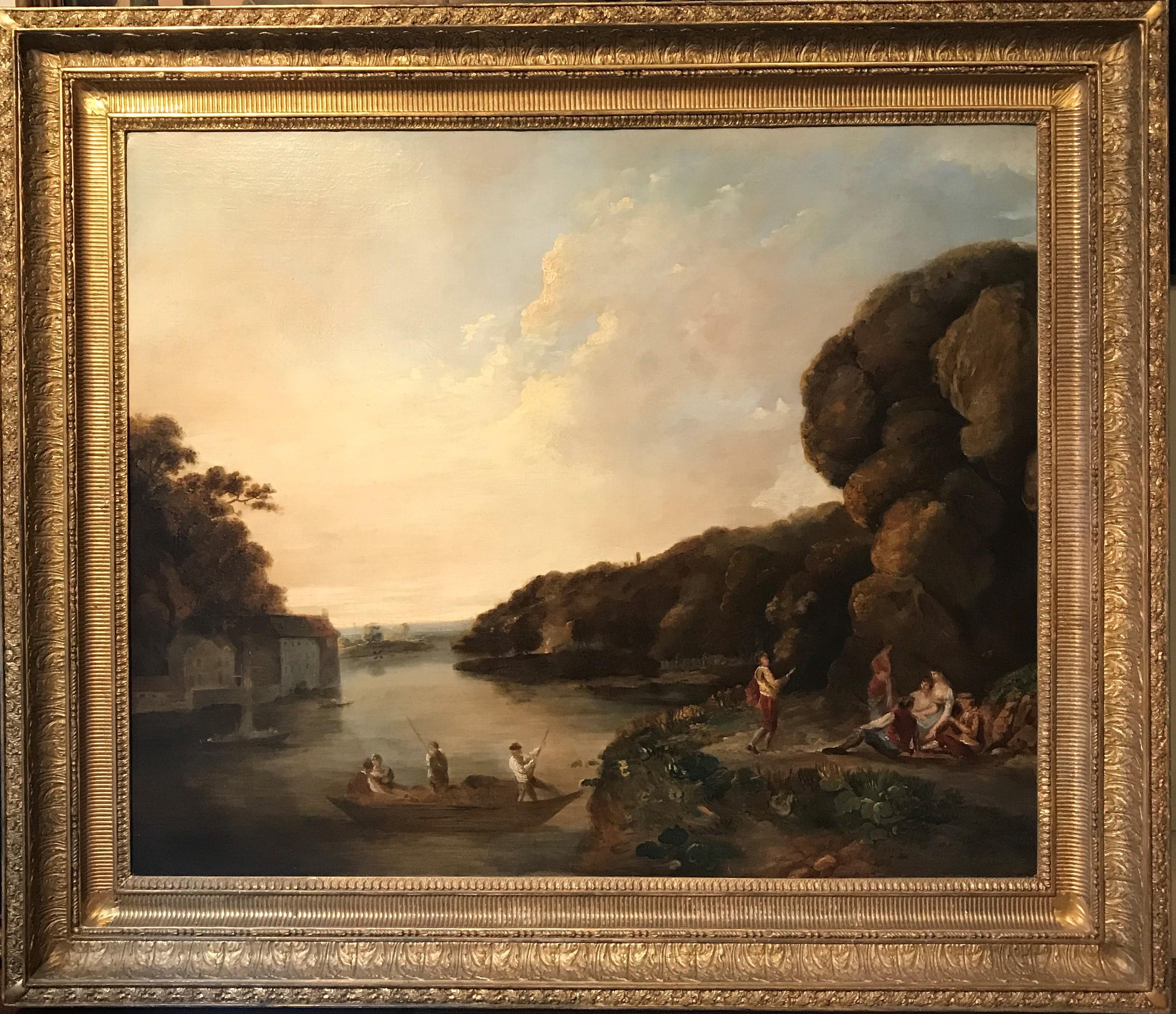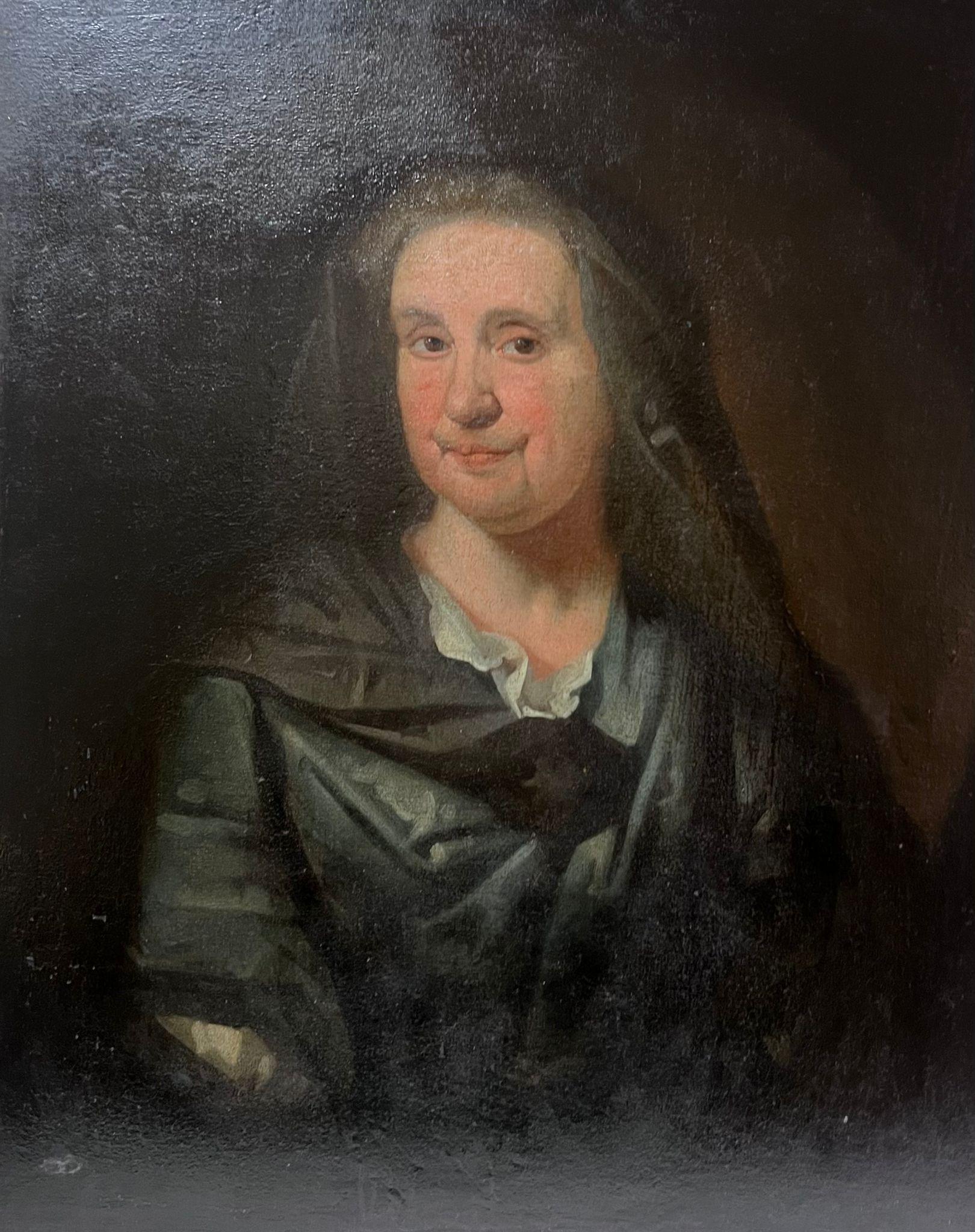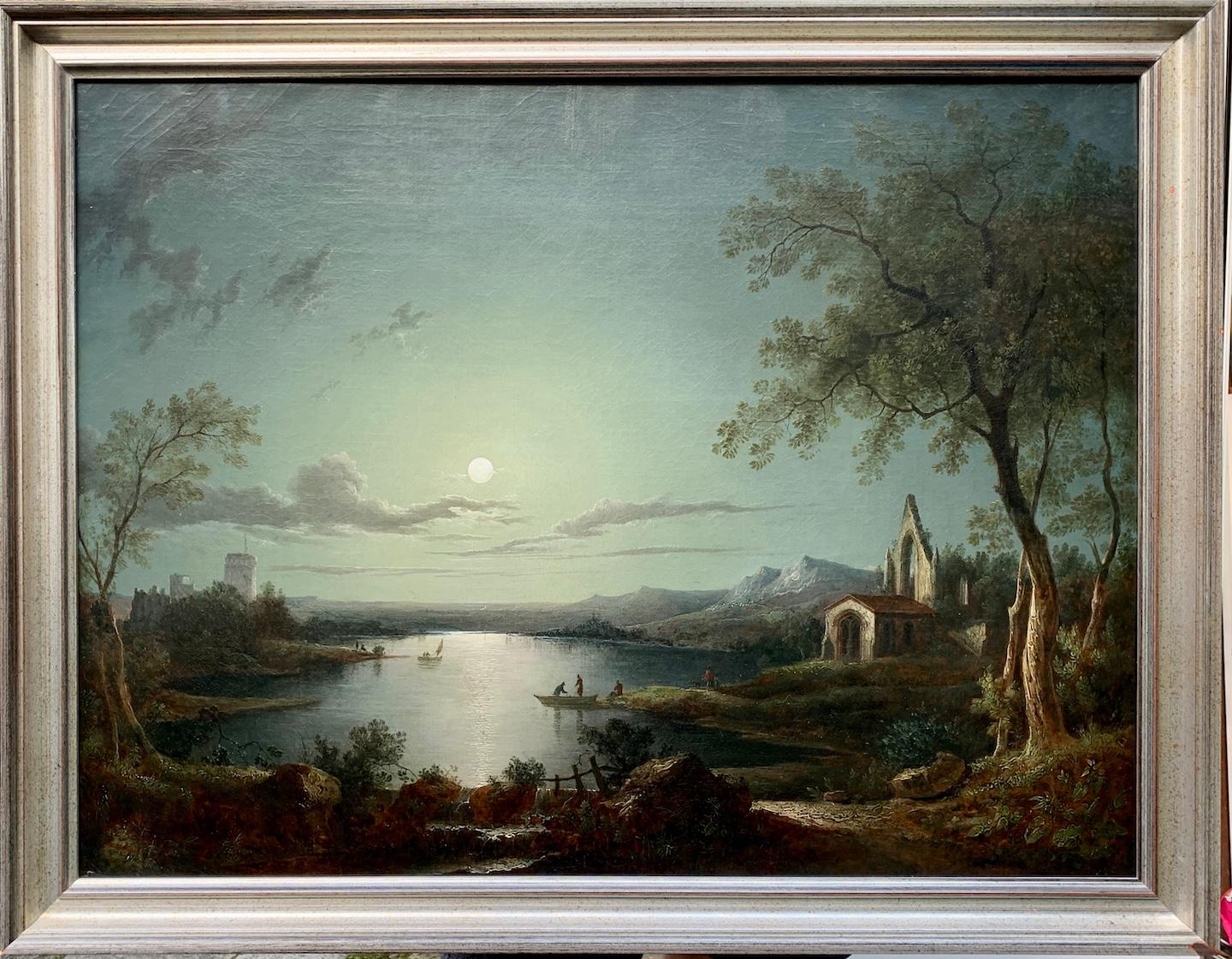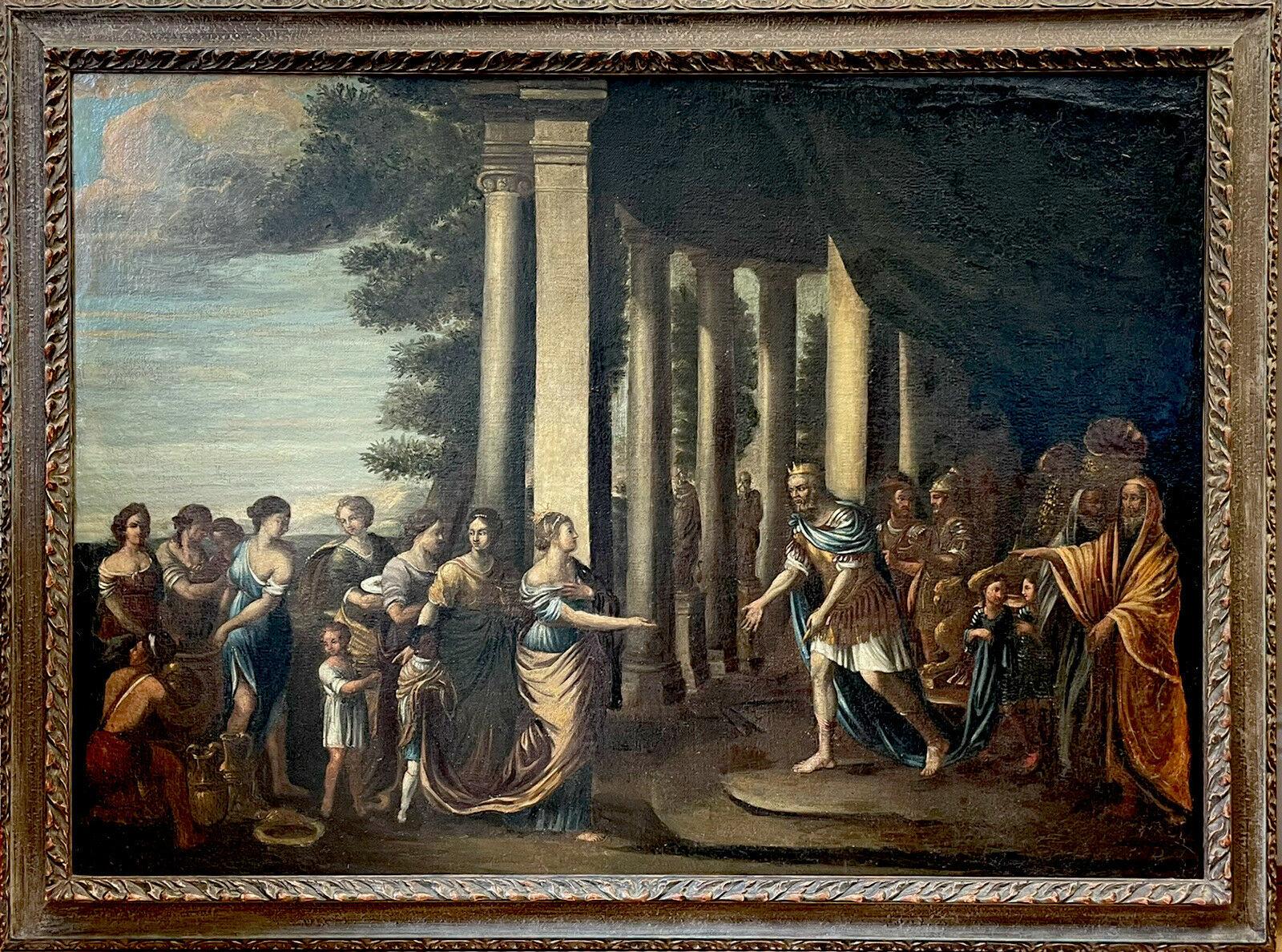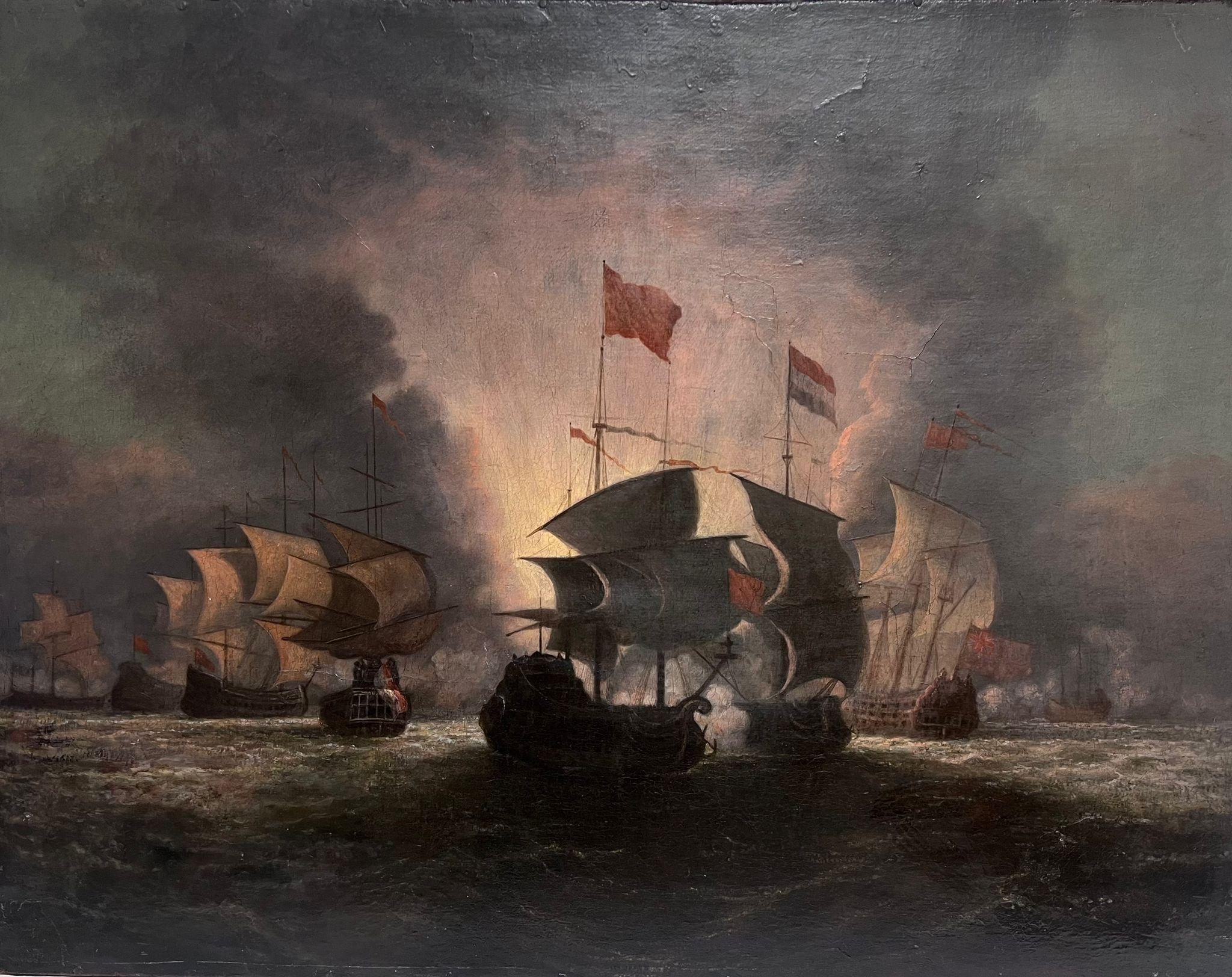Items Similar to The Parade of Swiss Guards a painting on canvas by Gabriel de Saint-Aubin
Want more images or videos?
Request additional images or videos from the seller
1 of 10
Gabriel de Saint-AubinThe Parade of Swiss Guards a painting on canvas by Gabriel de Saint-AubinCirca. 1766
Circa. 1766
About the Item
In this painting, Gabriel de Saint-Aubin, the great chronicler of the reign of Louis XV, takes us to the annual parade of the Swiss Guards at the Plaine des Sablons. He presents us with an image of great kinetic power, as if we were actually on the side-lines of the parade.
1. Gabriel de Saint Aubin, a chronicler of genius
Gabriel de Saint-Aubin was born on April 14th, 1724 into a family of artists: his father Gabriel-Germain (1696-1756) was the King's embroiderer and his five other surviving siblings (Charles-Germain (born 1721), Catherine-Louise (1727), Louis-Michel (1731), Athanase (1734), Augustin (1736) and Agathe (born 1739)) were also artists. The eldest son Charles-Germain became a draughtsman and embroiderer like his father, Louis-Michel became a painter at the Sèvres manufactory, Athanase an actor, Augustin a great engraver and a famous draughtsman, while his two sisters were also talented draughtswomen.
Augustin de Saint-Aubin's reputation as a draughtsman and engraver eclipsed that of his older brother Gabriel during his lifetime before research into the French 18th century, following the Goncourt writings, restored Gabriel's pre-eminence.
Gabriel was first trained in drawing by his father and then by Etienne Jeaurat (1699 -1789), Hyacinthe Colin de Vermont (1693 - 1761) and François Boucher (1703 - 1770). He taught drawing at the school of the architect François Blondel and made his first engravings, generally etchings, around 1750. The 52 prints that make up his work were generally produced in very small numbers but, because of their inventiveness, they constitute one of the peaks of 18th-century French engraving.
An unsuccessful candidate for the Prix de Rome from 1752 to 1754, he left the Académie Royale and exhibited at the Académie de Saint-Luc in 1774 and at the Salon du Colisée in 1776.
Gabriel de Saint-Aubin's reputation today resides mainly in his graphic work. An unrepentant observer of the society of his time, he sketched its scenes and amusements with vivacity. This creative fecundity was described by his contemporary, the painter Jean-Baptiste Greuze, as the "priapism of drawing". His immense dexterity even enabled him to sketch vignettes representing the artworks sold during the auctions he attended, captured in the margins of the sale catalogues. Today, these sketches often allow us to identify the works that were presented.
Gabriel de Saint-Aubin's paintings are the least known part of his work, although, according to Emile Dacier's count, a dozen of them (not to mention the watercolours and gouaches) have survived. To those existing paintings must be added the twenty or so lost originals which are only known through the engravings that were made after them, or through contemporary descriptions.
2. The Swiss Guards, last defenders of the French Monarchy
Long before the formation of the Swiss Guards Regiment in the early 17th century, the Kings of France employed Swiss soldiers for their personal protection: Louis XI is said to have been the first to have enlisted Swiss soldiers in 1481. This alliance was strengthened by François 1st after the battle of Marignan, and the Swiss contingent played a decisive role in the victory at Cerisoles in 1544. In 1616, King Louis XIII gave a Swiss infantry regiment the name of Swiss Guards, defining their main functions as the guard of the Royal Palace and the sovereign's personal security, alongside the Gardes-Françaises.
The Swiss Guards Regiment, which consisted of twelve companies, was about two thousand men strong at the time of our painting. It was housed in three barracks located in some neighbouring villages around Paris: Rueil, Courbevoie and Saint-Denis.
In 1789, the Gardes Françaises sided with the Revolution and joined the National Guard. On August 10th 1792, the Swiss Guards defended an empty palace while the King and his family fled to the Legislative Assembly. Outnumbered by the insurgents, the main body of the Regiment retreated after receiving orders from Louis XVI to cease fire and surrender their weapons to avoid carnage. Of the 800 to 900 Swiss guards present at the Palace, around 300 were killed in battle and 60 were subsequently massacred at the Hôtel de Ville after surrendering.
3. Description of the artwork
Le Défilé des Suisses was presented in the Henri Cain sale along with another work of similar subject and size, Les Gardes Françaises à la Parade, whose current location is unknown.
While most of his other known paintings represent either mythological subjects or genre scenes, here Gabriel de Saint-Aubin gives us a spontaneous image of a hugely popular event: the parade of the Swiss Guards Regiment, in front of the King. This parade took place every year on the Plaine des Sablons in Neuilly (between the present Porte Maillot and the Pont de Neuilly). In the background, one can see a rendering of of the Mont-Valérien hill.
Gabriel de Saint-Aubin matches the spontaneity of the draughtsman in this painting by using a very narrow colour range, evoking the dust raised by the parade.
Preceded by four drums, the Captain commanding the Company is marching at the head, followed by a row of five officers. A figure on horseback in the background may represent the King, or the lieutenant-general commanding the Guard (who was then probably the Baron de Bésenval, who had been appointed lieutenant-general and inspector-general of the Swiss and Grisons in 1762), but our attention is focused on the Swiss Guards and on the representation of their parade uniforms: white French breeches, red jacket with dark blue lapels decorated with white embroidery. The bear hats indicate that this is the grenadier company, as the other guards wore a tricorn.
This detail gives us an indication of the chronology of this artwork, since it was in 1766 that a company of grenadiers was added to the Regiment. It is therefore legitimate to think that it was also in that year that Saint-Aubin chose to depict this newly created unit, although a later date is also possible.
While the five officers are clearly identified, in the other three rows of grenadiers only the first in the row is depicted. The compact mass of the other grenadiers is simply evoked by a touch that might anachronistically be called impressionistic. The details dissolve as one moves up the row, and the individual presence of each grenadier is only suggested by the top of his bayoneted rifle, before this, in turn, fades into the background.
Saint-Aubin takes pleasure in capturing the moment when the whole Company has its right leg raised. This intrinsically unstable position creates great mobility in the representation that is further reinforced by the pictorial technique he uses to evoke the mass of soldiers. In this snapshot, only the elements in the foreground are depicted, as if the speed of the march made it impossible to describe the whole troop in detail.
A brightly brushed sky with its barely sketched clouds completes the feeling of movement. In many places, the very thin layer of paint reveals the canvas on which the liveliness of the brushstrokes can be felt. The narrowing of the palette to shades of pinkish beige unites the dust of the parade with the sky. By bringing out the brightness of the red of the uniforms, enhanced by a few splashes of blue, Gabriel de Saint-Aubin demonstrates his virtuosity and beautifies his painting in an enchanting whirlwind of colour.
Main bibliographic source :
Gabriel de Saint-Aubin, peintre, graveur et dessinateur Emile Dacier Paris and Brussels 1929
- Creator:Gabriel de Saint-Aubin (French)
- Creation Year:Circa. 1766
- Dimensions:Height: 22.05 in (56 cm)Width: 33.47 in (85 cm)
- Medium:
- Movement & Style:
- Period:1760-1769
- Condition:44 x 73 cm (framed 56 x 85 cm) - Louis XVI period gilded wooden frame (Maison Lebrun) Provenance: Henri Cain Collection (sold in Paris in 1927 Referenced as an autograph work in the catalogue raisonné by Emile Dacier Painting restored - CR available.
- Gallery Location:PARIS, FR
- Reference Number:1stDibs: LU156828321432
About the Seller
5.0
Vetted Seller
These experienced sellers undergo a comprehensive evaluation by our team of in-house experts.
Established in 2020
1stDibs seller since 2021
8 sales on 1stDibs
Typical response time: 1 hour
- ShippingRetrieving quote...Ships From: PARIS, France
- Return PolicyA return for this item may be initiated within 3 days of delivery.
More From This SellerView All
- Stag Hunting in the Vicinity of Nuremberg by a German Artist Peter von BemmelLocated in PARIS, FRThis small landscape shows a hunting scene: two riders are chasing a stag with their dogs at the edge of a forest. Signed by Peter von Bemmel, it is typical of the production of this...Category
1720s Old Masters Landscape Paintings
MaterialsCopper
- The Departure of the Vendéens, an oil on carboard by Pierre-Paul Prud'honBy Pierre-Paul Prud'honLocated in PARIS, FRProvenance: Alfred Stevens Collection Sold by Madame Blanc on May 3, 1876 (number 24 representing The Departure of the Vendéens, FRF 510, bought back by Madame Blanc). Paul Touzet (...Category
1790s Old Masters Figurative Paintings
MaterialsOil, Cardboard
- Italian Landscape with Jack Players, a painting by Gaspard Dughet (1615 - 1675)By Gaspard DughetLocated in PARIS, FRHere Gaspard Dughet offers us an idyllic vision of the Roman countryside. The stages follow one another in a perfectly structured composition, revealing here a lake, there travellers walking along, gradually leading our eye to the blue horizon. But behind its classical composition, this landscape is particularly interesting because of three anthropomorphic details that the artist has hidden, opening the way to a radically different interpretation... 1. Gaspard Dughet, a landscape artist in the light of Poussin Gaspard Dughet was born on June 4th, 1615 in Rome where his father, of French origin, was a pastry cook. He was probably named Gaspard in honour of his godfather Baron Gaspard de Morant, who was, or may have been, his father's employer. His older sister Jeanne married the painter Nicolas Poussin (1594 - 1655) on September 1st, 1630. The young Gaspard was apprenticed with his brother-in-law at the beginning of 1631, which led his entourage to name him Gaspard Poussin. The first preserved works of the painter date from the years 1633-1634 and were painted in Poussin’s studio. Around 1635, Gaspard Dughet became emancipated and began to frequent the Bamboccianti circle. In 1636, he became friends with the painter Jean Miel (1599 - 1656), but also with Pier Francesco Mola (1612 - 1666) and Pietro da Cortona (1596 - 1669). This was also the time of his first trips throughout Italy. The painter, although of French origin, appears never to have visited France. In 1646 he settled permanently in Rome. A recognized painter with a solid book of orders, he remained faithful to landscape painting throughout his life, alternating between cabinet paintings and large decorative commissions, using both oil and fresco. Nailed to his bed by rheumatic fever at the age of 58, he died on May 25, 1675. 2. Discovering an idealized landscape Beyond a relatively dark foreground that takes us into the landscape, we discover a vast bluish horizon: a plateau surrounded by deep ravines advances to the right, overhanging an expanse of water that sparkles below. A road winds through a mountainous mass as if leading us to the fortress that crowns it; another town appears in the distance at the foot of three conical mountains. The composition is rigorous, mineral, and structured by geometric volumes. The various stages in the landscape lead one to the next attracting the eye towards the horizon located in the middle of the canvas. The general impression is that of a welcoming and serene nature. In many places the paint layer has shrunk, or become transparent, revealing the dark red preparation with which the canvas was covered and accentuating the contrasts. Human presence is limited to three jack players, leaning against a mound in the foreground. Their long garments, which may evoke Roman togas, contribute to the timelessness of the scene. Close examination of the canvas reveals two other travellers on the path winding between the rocks. Made tiny by the distance, their introduction in the middle register, typical of Dughet's art, lengthens the perspective. While it is difficult to date the work of a painter who devoted his entire life to the representation of landscapes, it is certain that this painting is a work from his later years. The trees that occupied the foreground of his youthful compositions have been relegated to the sides, a stretch of water separates us from the arid mountains counterbalanced by two trees represented on the opposite bank. The introduction of this stretch of water in the middle of the landscape betrays the influence of the Bolognese and in particular of the Dominiquin (1581 - 1641) A number of similarities with a drawing in the British Museum might suggest a date around 1656-1657, since, according to Marie-Nicole Boisclair , it has been compared with the Prado's Landscape with the Repentant Magdalene, painted at that period. 3. Three amazing anthropomorphic details While some late Renaissance landscapes offer a radical double reading, allowing one to see both a face or a human body behind the representation of a landscape, it seems interesting to us to hypothesize that Gaspard Dughet had fun here by slipping in a few details that, taken in isolation, evoke human or animal figures. We will give three examples, looking closely at a cloud, the trunk of a broken tree and the top of a cliff. The main cloud could thus evoke a Christ-like face or that of an antique god...Category
1650s Old Masters Landscape Paintings
MaterialsOil
- Macbeth and the Three Witches a Painting on Panel by Francesco ZuccarelliBy Francesco ZuccarelliLocated in PARIS, FRThis painting, created during Zuccarelli's stay in England, represents the decisive moment when Macbeth, together with Banquo, meets the three witches who announce that he will be Ki...Category
1760s Old Masters Landscape Paintings
MaterialsOil, Wood Panel
- Herminia and the Shepherds, a painting by Francesco de Mura (Napoli 1696 - 1782)By Francesco de MuraLocated in PARIS, FRIn this masterly painting, Francesco de Mura presents the meeting of Herminia and the shepherds, a famous episode taken from the seventh canto of Torquato Tasso's Jerusalem Delivered...Category
1760s Old Masters Figurative Paintings
MaterialsCanvas, Oil
- View of the Grand Canal, a painting by William James, after CanalettoBy William JamesLocated in PARIS, FRAlthough we have little bibliographical information on William James, we know that he was trained by Canaletto during the painter's stay in England between 1746 and 1755. Although he may never have been to Venice, William James remained under the influence of his master for a long time and became known for his paintings inspired by Canaletto's artworks. In this painting, William James is inspired by one of the twelve views of the Grand Canal painted by Canaletto for Joseph Smith, or more precisely by the engraving made by Antonio Visentini in 1735 after this painting. He delivers a very personal version, vibrant with colours, in which he brilliantly reproduces the moving surface of the sea, animated by the ever-changing traffic of the gondolas. 1. William James, the English follower...Category
Mid-18th Century Old Masters Landscape Paintings
MaterialsCanvas, Oil
You May Also Like
- 18th Century English Oil Landscape Painting: Elegant Figures alongside River WyeBy Attributed to William MarlowLocated in London, GBAttributed to William Marlow (English, 1740-1813) Elegant Figures alongside the River Wye 1790 131 x 152 cm, inc. frame This quiet bucolic scene shows figur...Category
Late 18th Century Old Masters Figurative Paintings
MaterialsCanvas, Oil
- Large 18th Century English Old Master Oil Painting Portrait of Lady on canvasLocated in Cirencester, GloucestershirePortrait of a Lady English School, 18th century oil on canvas, unframed canvas : 31 x 25 inches provenance: private collection, UK condition: good and sound conditionCategory
Early 18th Century Old Masters Landscape Paintings
MaterialsOil, Canvas
- 17th Century by Simone Cantarini Adoration of The Magi Painting Oil on CanvasLocated in Milano, LombardiaSimone Cantarini (Pesaro 1612 - Verona 1648) Adoration of the Magi Oil on paper applied to canvas, cm. 16,5 x 24 – with frame cm. 22 x 29 Antique sh...Category
Early 17th Century Old Masters Figurative Paintings
MaterialsCanvas, Cotton Canvas, Oil
- Late 18th century Antique English Moonlight over a lake and church landscapeBy Henry PetherLocated in Woodbury, CTHenry Pether, late 18th-century Moonlight lake Landscape. Born into a family of artists, Henry was the son of Abraham Pether (1756-1812), a talented la...Category
1790s Old Masters Landscape Paintings
MaterialsCanvas, Oil
- HUGE 17thC ITALIAN OLD MASTER OIL PAINTING - KING & COURT FIGURES ROMAN BUILDINGLocated in Cirencester, GloucestershireArtist/ School: Italian School, 17th century. Title: A King and Queen before court figures, amidst a classical landscape with Roman columns. Medium: oil painting on canvas, framed ...Category
17th Century Old Masters Figurative Paintings
MaterialsOil, Canvas
- 1800's French Naval Battle Scene Night Time Engagement Large Oil on CanvasLocated in Cirencester, GloucestershireThe Naval Engagement French School, early 1800's period oil on canvas, unframed painting: 28 x 36 inches provenance: private collection condition: very good and sound condition, with...Category
Early 19th Century Old Masters Landscape Paintings
MaterialsCanvas, Oil
